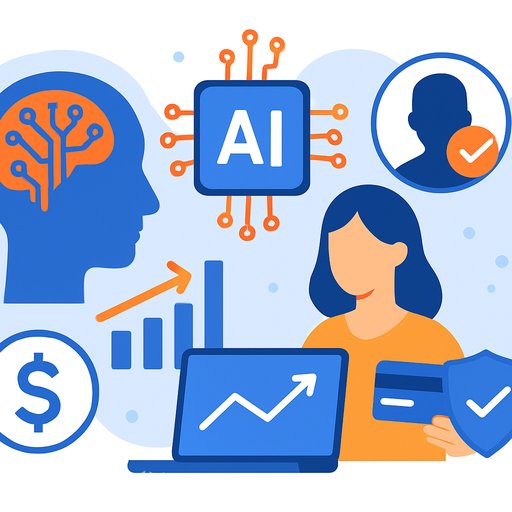Innovation AI: How Finance Teams Can Get An Edge With AI
AI is changing finance from back-office workflows to front-office decisioning. Tasks that were impractical a few years ago now run in minutes. The biggest temptation is market forecasting. If models could consistently beat a random walk, the game would look different. Most can't. Your advantage will come from how you deploy AI across fraud, risk, compliance, and client experience-at speed and with discipline.
Where AI is already creating value
- Fraud and financial crime: Graph-based detection plus LLM-driven case triage lowers loss rates and false positives.
- FP&A and treasury: Forecast cash, optimize working capital, and produce scenario plans in hours, not weeks.
- Execution and market microstructure: Signal discovery, smarter order routing, and anomaly detection for algos.
- Compliance: Automated KYC/AML checks, policy mapping, model documentation, and audit trails.
- Client service: 24/7 assistants that pull from approved knowledge, summarize statements, and suggest next-best actions.
What separates winners
- Personalization that earns trust: "Personalization is trust, at the end of the day," noted Rishi Nair. Use first-party data to deliver relevant guidance, not generic replies.
- Proprietary data loops: Connect production systems to feedback. Label outcomes, close the loop, and let models learn where it counts.
- Right model for the job: Retrieval-augmented generation for policies and docs; fine-tunes for domain language; small models for latency-sensitive flows.
- Human-in-the-loop: Route high-risk decisions to analysts, capture overrides, and turn those edits into new training data.
- MLOps and LLMOps: Version data, prompts, and models. Monitor drift, cost, and quality. Ship updates weekly, not yearly.
- Compliance by design: Redaction, PII controls, and explainability as defaults-not bolt-ons.
Operating model that works
- Cross-functional pods: Product, data science, engineering, risk, and compliance in one team with a clear business owner.
- Kill the pilot graveyard: Each experiment needs a metric, a deadline, and a go/no-go gate to production.
- Upskill your staff: Analysts who can prompt, validate, and QA AI outputs deliver faster cycles and fewer escalations.
Metrics that matter
- Fraud: Loss rate, false-positive rate, case handle time, chargeback recovery.
- Risk: Model error bounds, VaR stability, scenario coverage, stress test turnaround.
- Ops: Cost to serve, first-contact resolution, time-to-close, and deflection rate.
- Sales/retail banking: Response quality score, conversion lift, and NPS for AI-assisted journeys.
- Governance: Percentage of AI features with documentation, lineage, and approval.
Risk and control essentials
- Data governance: Minimize PII, tokenize sensitive fields, and separate training from inference data.
- Model risk management: Document intended use, limits, validation tests, and rollback plans. Align with the NIST AI Risk Management Framework.
- Controllability: Guardrail prompts, policy filters, and retrieval whitelists. No free-text access to raw client data.
- Auditability: Log prompts, context, outputs, and decisions. Keep immutable records for regulators.
Fast-start playbooks
- Fraud case copilot: RAG over internal policies and past cases. Generate risk summaries, suggest next steps, and auto-fill SAR drafts for analyst review.
- Next-best action in retail banking: Blend transaction clusters with consented behavioral data. Surface one helpful suggestion per session with clear opt-outs.
- Compliance assistant: Parse onboarding docs, extract entities, check against sanctions, and produce a reasoned approval/hold summary.
- FP&A accelerator: Auto-ingest GL data, create baselines, and run what-if shocks on inputs that finance can tweak in plain language.
Build vs. buy
- Build: When data is unique and latency, cost, or IP control matter. Requires strong platform engineering and governance.
- Buy: For commoditized capabilities (OCR, IDV, summarization). Demand prompt/version control, SOC2/ISO, and exportable logs.
- Hybrid: Vendor core + your data and policies via retrieval; fine-tune only where it pays back.
Personalization as the durable edge
Personalization compounds because it improves with every interaction. As Nair put it, when clients feel the system "knows me," trust rises and so do outcomes. Use that standard: relevance, clarity, and consent. Everything else is table stakes.
What to do this quarter
- Pick two use cases with clear value (one risk, one revenue). Set owners, budgets, and success metrics.
- Stand up a safe data pathway: redaction, retrieval over approved content, and production-grade logging.
- Ship in 6-8 weeks, then iterate weekly based on error review and user feedback.
- Train analysts and PMs to write effective prompts, review outputs, and capture corrections.
Helpful resources
The edge isn't a secret model or a magic prompt. It's data quality, shipping discipline, and a product mindset that puts client trust first.
Your membership also unlocks:






